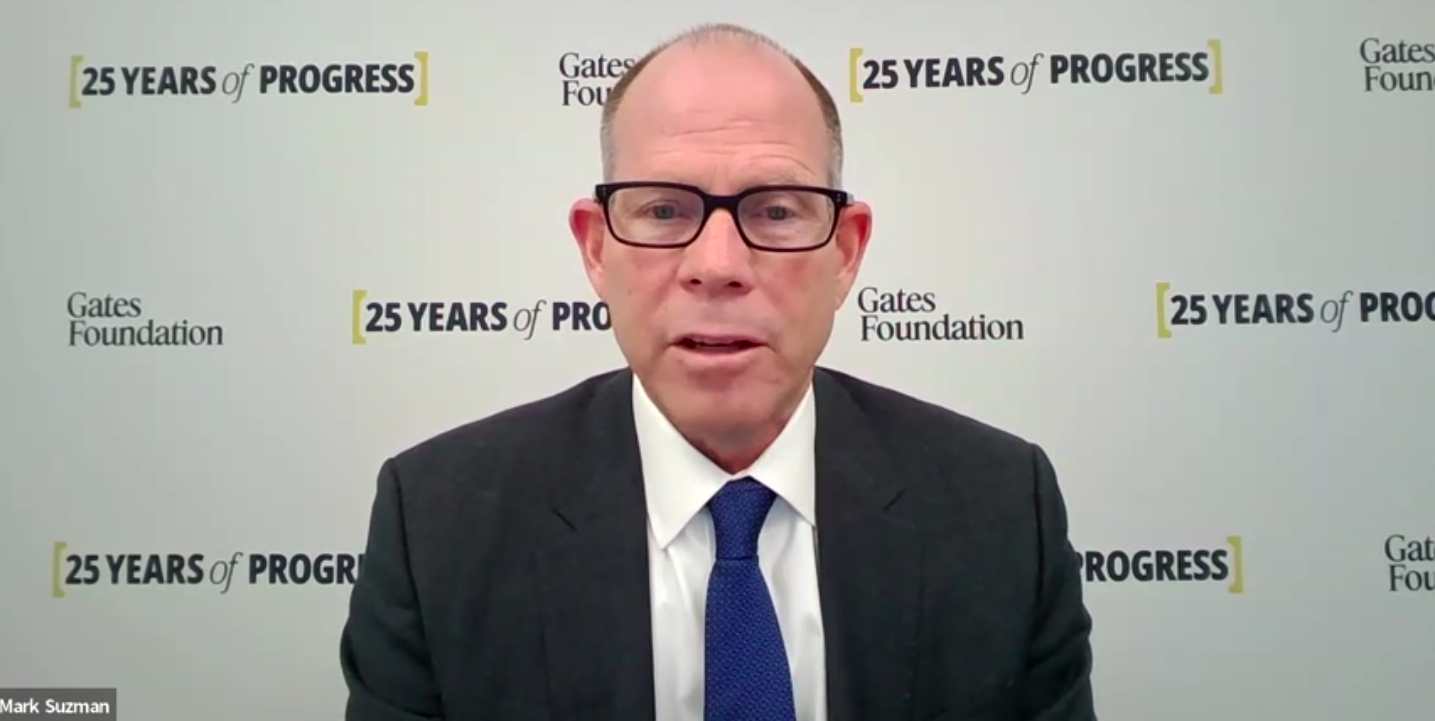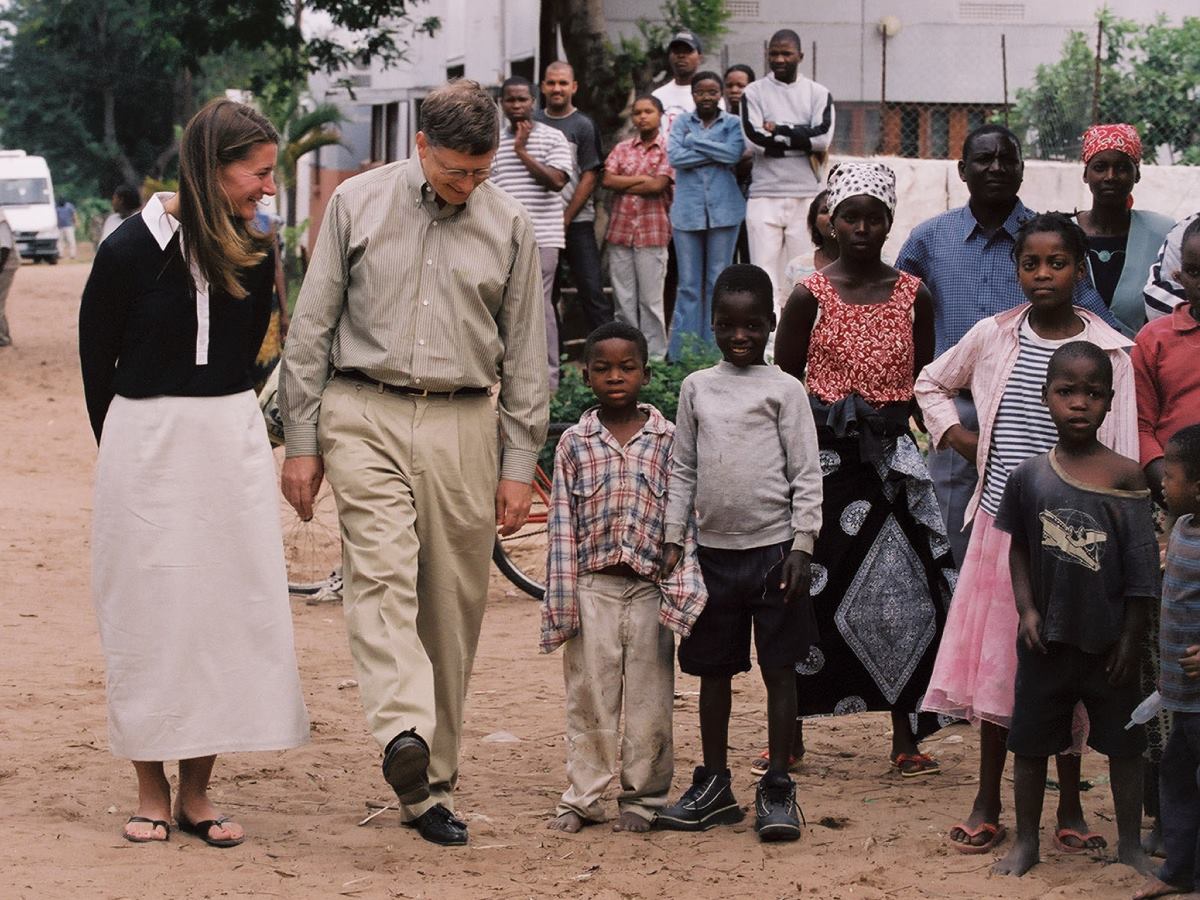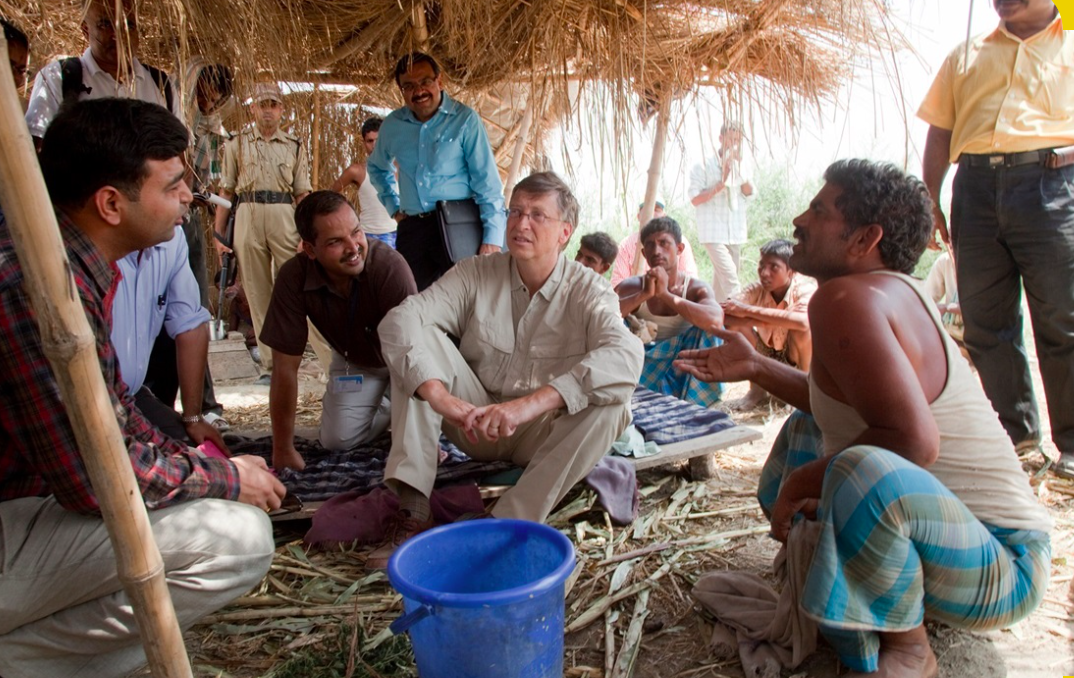 CEO of the Gates Foundation Mark Suzman during the interview with journalists on May 8, 2025.
CEO of the Gates Foundation Mark Suzman during the interview with journalists on May 8, 2025.
Philanthropist Bill Gates last week announced he will give away virtually all his wealth, through the Gates Foundation, which will shut completely on December 31, 2045.
He said the foundation will give away $200 billion over the next 20 years. The amount includes Gates’ own future contributions and balance of the foundation’s endowment. This is double the $100 billion that the foundation has donated since it was founded in 2000.
Following this announcement, the Foundation’s Chief Executive Officer MARK SUZMAN held conference call with select journalists from around the world to provide clarity on what this means for grantees, partners, and countries that rely on its funding.
Kenya, a major recipient of Gates Foundation support in areas such as healthcare, agriculture, and digital financial inclusion, will remain a critical focus country throughout this transition.
Below is a condensed version of the interview,
edited for clarity and length.
What methods will the foundation use to scale up funding to fulfill this pledge? Will it make more grants, make larger or longer grants?
The truth is we've been scaling up for our full 25 years. When we opened our doors in 2000, when Bill and Melinda made their original contribution, our annual budget was $1 billion a year, which already made us the largest foundation in the world by payout. We have been steadily increasing that nearly every year.
This year (2025) our budget will be $8 .75 billion, next year our budget will be $9 billion, and we will now be in the $9 -10 billion range for the next 20 years. So we have already scaled up.
We feel that the staffing we have, the partners we have, the resources we have are the ones that we are gonna use and leverage to focus on the issues and priorities we've set.
We have amazing work underway from the potential of new vaccines in tuberculosis, new tools in agricultural development from AI -supported apps that help farmers understand the forecasting, access to financing, what seeds to use, new curriculum tools in the US that allow us to do better, more targeted education.
So we are already at scale and what
we are doing is committing to stay at this historic scale for the next two
decades in a predictable and reliable way.
You said this has been planned for more than a year. Have the recent actions of the Trump administration changed the urgency around the decision or changed the biggest priorities and areas of focus for funding?
I would say we first began these discussions at the beginning of last year with our board and Bill. It really was focused on our 25th anniversary, which we knew was coming up and trying to take the lessons from our previous two decades and think what is going to make the most impact. We had made the decision to bring forward our funding and accelerate it, given the pipeline of innovations we have, given the needs of today.
There have been significant cuts by the US, United Kingdom, proposed cuts by France, proposed cuts by Netherlands, all in traditional international aid, much of which has been critical.
This only heightened the urgency. We've seen with some of the early impact of some of
the preliminary cuts that there are real challenges. It does look likely, based on current trends, that sadly this year, 2025, is likely to be the
first year of this century where preventable child mortality actually rises
rather than declines. Where we see an increase in
preventable deaths in HIV, tuberculosis, and malaria. And so we want to do
everything we can to offset that.
But again, to emphasise, philanthropy alone, even a philanthropy of our size and scope, cannot possibly fill the gap that governments currently fill. And so we're going to make a stronger case as possible that this is the highest impact spending that any government can do. And we believe it has the full support of the vast majority of citizens in those countries.
If they can be reassured that their resources are actually going to these life-saving treatments that save kids' lives, that save mothers and childbirth, that save a mother with HIV from passing that on to her child, that is something that every citizen and taxpayer would support their taxpayer dollars or euros or pounds going to.
 Bill Gates when he visited farmer Mary Mathuli in Makueni County in November 2022.
Bill Gates when he visited farmer Mary Mathuli in Makueni County in November 2022.
Of the amount that you've announced ($200 billion), do we know how much will be allocated to sub-Saharan Africa, which is facing lots of challenges, including maternal health and extreme poverty levels?
Our mission is always to focus on the poorest and most vulnerable.
We think that our core role is to
meet what we call market failures. The research into malaria, for example,
which is the disease that still kills more children than any other, nearly 600,000 every year, should be multiples the size it is. But because the vast majority of those deaths are in
the global south, in sub -Saharan Africa, we don't
see the kind of support from the private sector and the pharmaceutical sector
from big government researchers in the global north because they don't suffer
from malaria.
So we commit that our resources will continue to go into areas like malaria or HIV or TB, that still kill the most people in the global south and especially in Africa.
Now Africa has both the highest
disease burden and the highest poverty burden. At the time we were founded in
2000, the highest disease and poverty burden was in South
Asia.
That has shifted. Although there's still significant challenges in South Asia and we will continue to work there for the lifetime of the foundation, it is fair to say that the majority of the foundation's work going forward will almost certainly focus on sub Saharan Africa because that is where the greatest needs and opportunities are.
How much will Bill Gates be donating, sa part of his fortune, to the Foundation each year going forward?
Our endowment stands at approximately USD 77 billion today. Bill has pledged to give away more than 99 percent of his remaining wealth, ensuring the Foundation can maintain annual payouts of $9-10 billion. The exact timing and scale of each transfer will depend on market conditions and investment returns, which our finance team actively manages to cushion against volatility. By 2045, we expect to have fully deployed both the existing endowment and Bill’s future donations. Importantly, this commitment means our grantmaking is effectively ‘pre-funded’ – we won’t need to raise additional capital, allowing us to focus entirely on programmatic delivery and partnership.
 Bill Gates and Melinda during a trip to Mozambique in 2003 to learn more about fighting malaria.
Bill Gates and Melinda during a trip to Mozambique in 2003 to learn more about fighting malaria.
Do you anticipate this significant donation will
set a precedent for other philanthropists, and how might this reshape global philanthropic
efforts?
We certainly hope so. As a reminder, Bill and Melinda and Warren Buffett
together 15 years ago formed the Giving Pledge. The Giving Pledge is a
organization that gathers essentially billionaires, those committed to give at least half a billion
dollars or more of their fortune to charity. It has over 200 members from
around the world right now. And that is a commitment that they wanted to build
on from their example.
The hope is that we will see a massive expansion in Africa in philanthropy, in the US and globally. And more important, by the time we do sunset in 2045, our hope is that the focus on preventable child mortality and big infectious disease will not need to be as big a philanthropic focus because many of those problems will be largely solved and under control.
We know that the wider challenges in areas like education and economic opportunity and other areas of health will remain and we are cautiously hopeful that there will be a next generation of philanthropists with even greater wealth, who share that commitment and are willing to make the commitment to address tomorrow's problems.
Are there
plans to help grantees and organisations to plan for the long-term sustainability so
that in the next 20 years, the market gap that the Foundation fills now can be
sustainable business and work with the same degree of impact?
It is one of the reasons why we are announcing this timeline now so that over the next 20 years we can be very responsible and thoughtful working with our partners around the world to plan for exactly that.
In some areas, we hope there won't be a need for long-term partners. If polio is eradicated we won't need a global polio eradication issue. We won't need the wide range of partners we have, so some of those will have gone away.
In other areas, we will need infrastructure and supporters who are able to sustain the work and carry it forward after we're gone. And we believe the 20 year timeline is going to allow us to plan this very thoughtfully and responsibly.
We'll do it with all of our strategic planning. We have a very comprehensive annual planning process where we take a look at needs, opportunities, where our partners and where other resources are available.
And you will see us continuing to do this in coming years.
 Bill Gates when he visited Bihar, a state in East India, bordering Nepal, in 2010.
Bill Gates when he visited Bihar, a state in East India, bordering Nepal, in 2010.
What is the attitude of former co-chair
Melinda French Gates and former trustee Warren Buffett, toward this announcement?
The discussion about the end date of the foundation came when Melinda was still on our board last year. And so she and Warren are both very supportive and have been kept in the loop about the plans.
I really treasure both, the example that they have set over the past quarter century of really contributing to everything that we have been able to achieve, which could not have been done without the two of them. And speaking both personally as the CEO, but also as the institution of the Gates Foundation, we remain very proud and pleased that they are as supportive and excited about today's announcement as we are.
What message does the Foundation hope to send to the global community with this announcement?
Above all, this pledge is a message of optimism and solidarity. The last 25 years have delivered the fastest improvements in human health and well-being in history: child mortality cut in half, the eradication of smallpox derivative threats, agricultural yields doubling across much of sub-Saharan Africa, and hundreds of millions lifted out of extreme poverty.
Yet billions still lack basic health services, and climate change threatens to erode those gains. By committing our full resources upfront, we signal that the fight is far from over and that philanthropy stands ready to partner with governments, the private sector, and civil society to finish the job. We believe that investing in human potential is the surest path to a safer, more equitable world.
What entity will host and sponsor the Giving Pledge going forward before or after 2045?
That's a discussion that needs to take place with all the Giving Pledgees. Currently, we simply host the Giving Pledge. It's actually an independent organisation with independent goals and independent members that were set up by Bill and Melinda and Warren. And it has its own commitments. And so that discussion will take place sector by sector, partner by partner. We'll be trying to do this in a very thoughtful and careful and deliberate ways.
What key milestones or indicators will you use to assess its success over the next two decades?
It's lives saved and opportunities provided for the poorest and most vulnerable in the United States and around the world and we track that every day. We track that through all our investments.
That is the key metric by which we, our partners, should be judged by. I think and truly believe that’s the yard stick that the world should be judging itself by because we continue to believe these are truly global values – the values that the Gates Foundation stands for – whether you're in China or the United States or in Nigeria or in India.
And we're very proud to be standing for those values and we're very proud of the range of partnerships we've been able to build over the last quarter century.











